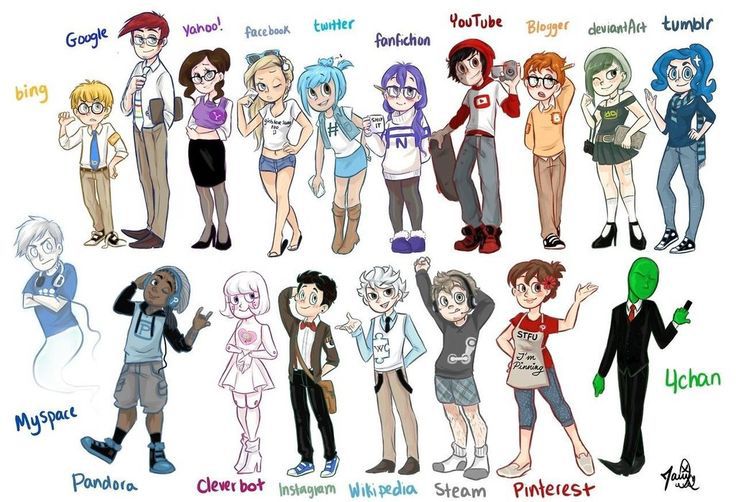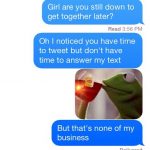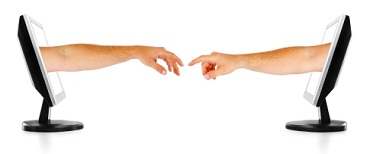[Part 9 of 9: The Social Animal on Social Media, Part 1, Part 2, Part 3, Part 4, Part 5, Part 6, Part 7, Part 8]
Social media may be changing the way we do business and how we connect with others, but I don’t believe it is changing us fundamentally as humans. My theory, after writing this series, is that social media reflects the way we behave, and we behave the way do because we are human. And, because we are human, we just can’t get enough of social media, which really isn’t our fault, it is just the way we are made.
Social media not only lights up the nucleus accumbens, the part of our brain which deals with rewards, but does so randomly, which is called a variable interval reinforcement schedule. Rats or birds who have been trained to get rewards randomly will work harder for rewards, and take longer to give up checking once all rewards for the behaviour is removed. We are the same, we will randomly check all our social media for a very long time, before it no longer rewards us.
One reason is that, social media is much easier on us than the face-to-face contact of daily life and that in itself is a reward for we much prefer people who are nice to us without us having to make a massive effort. For once we are tangled up with other people – as we have seen throughout this blog series – we conform and betray ourselves, we behave aggressively and act with prejudice, all so we can avoid feeling rejected. Then, we feel so bad about our shoddy behaviour that we have to find ways to feel better by reducing our cognitive dissonance and the gap between who we are (good people) and the things we do (behave badly towards other, or towards ourselves, like when we agree to do favours for people we don’t like).
We all need connection
It really isn’t our fault. Brene Brown, Professor of Sociology, says, that we are neurobiologically wired to want to connect with our fellow human beings. We all want to feel that we matter. So, of course we would choose social media. Why not choose the quickest and easiest way possible to feel connected to others? It seems like less of an emotional investment, but as this series has demonstrated, it really isn’t.
It might have been okay if social media had stayed as it began: easy and quick ways to share pictures, videos, texts between groups of friends, or networks for sharing interests across time and space. But once, we realised that anyone could be a star in the land of digital culture, then we all spent more time there trying to be loved or trying to make money – it amounts to the same thing, after all: money=influence, influence=feeling loved and valued.
And, then once news could get delivered the way we liked it, via, for example, the Huffington Post who serve up the same article with two different headlines and then they go with the headline which attracts the most hits (aka A/B testing), we never stood a chance. Web media started giving us what we want, right around the clock which encouraged traditional news outlets to try and keep up. Consequently in-depth coverage and accuracy seems to have suffered. Facts are cherry-picked for nice looking memes which can remain unsubstantiated assertions because the rest of the facts don’t get checked half as much as what the crowd says. Journalism is engaging in groupthink.
Limits on friendship
Marketer, Marcus Sheridan, wrote a funny blog called Chris Brogan unfollowed me on Twitter and now I hate my life. How many of us measure our worthiness by the amount of un/followers we have on Twitter or friends on Facebook? How many of these people do we actually know?
Dunbar’s number, proposed by an anthropologist of the same name, postulated a limit to the number of people with whom one can maintain stable social relationships. These are relationships in which an individual knows who each person is. In reality the number is a series: 5 – 10 close friends, then 5-10 x 3 = people you might have to dinner, and so on, until you reach a maximum of 150 (for a wedding or party) of close people you know who are there to celebrate an event in your life. Dunbar’s number is tiny compared to the numbers seen on Facebook.
I’d rather be anywhere than here
Google Designer, Jake Knapp wiped social media and email off his iPhone because he felt that by constantly checking social media apps he wasn’t present in his present moment, which is so true. If we are constantly distracted by our apps, or eager to share or capture a moment, then we are not really present in that moment.
This got me thinking, if we are constantly looking at other people’s moments and memes on social media, then when we get to experience that moment for ourselves, aren’t we having a second hand experience? Will the landscape remind us of a photograph? Will an emotion remind us of a meme? Are we experiencing what we feel we should rather than what would make us feel good?
Get nuanced
Meditation teacher davidji, has said that those voices who are ranting on Facebook are usually the loudest voices (not normally the most accurate or uplifting, just influential) and they have an impact on us. We react to what other people are saying and doing online instead of following our own agenda. daviji believes that we need to get nuanced, and know what we are feeling, so we do not get hijacked by other peoples’ opinions. Otherwise we don’t stand a chance of not being influenced, and this is why we are endlessly fascinated by people who influence us. We want to know how they do it so we can wrestle back our power or try influence others so we can be heard.
I still believe that social media has the capacity to augment us, even though I have seen throughout this blog series the many ways it can diminish us, but that is because we are human, who haven’t yet realised that we all count and are all connected anyway. Social media just can’t do that for us. It is not a brave new world, it the same old world on a small screen. To find a brave new world we have to do that ourselves, and we have to start by looking inside ourselves, instead of inside our phones.






3 comments